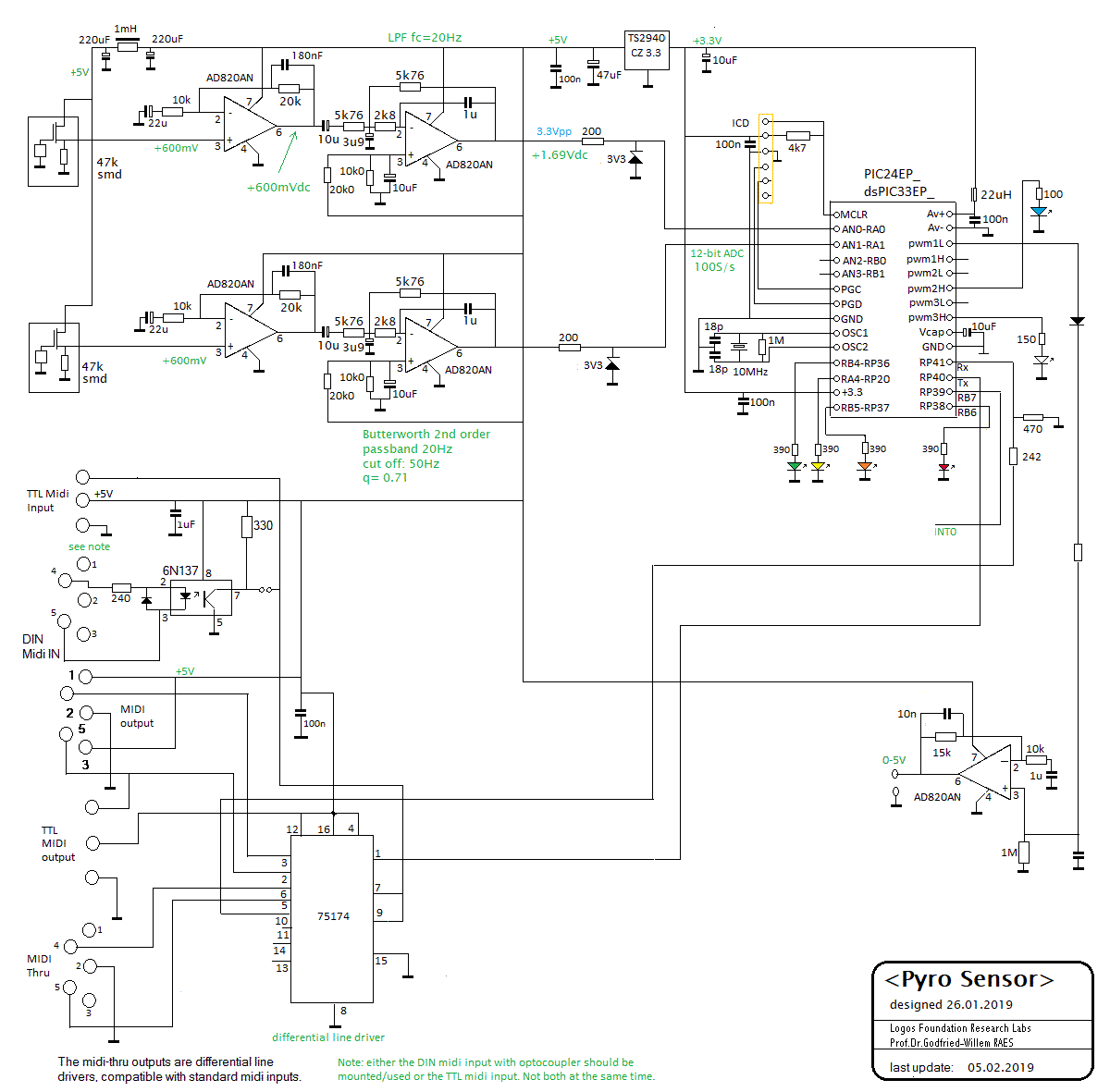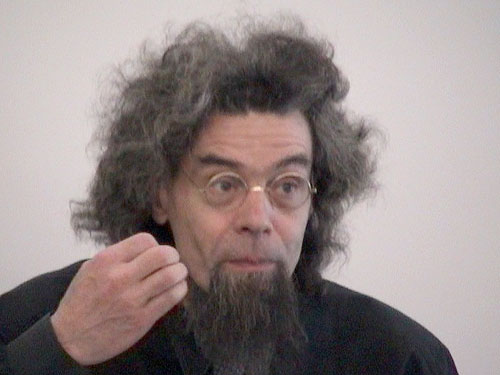Pyro-detectors
Kemet PL N823-01:
In january 2019 we came across a new type of pyro-sensor produced by KEMET, type nr. PL N823-01. After studying the highly incomplete datasheet (we presume is was written by the marketing rather than by the engineering department...) , we bought two of these tiny parts for furher examination and measurement. (3) First of all, they are very small SMD components and thus we first had to solder them on a socket (we used a 6-pole DIL IC socket) to make experimenting possible. The 47k source resistor (an SMD component) was soldered on the socket, between source and ground. Here are some pictures of the component: Frontal side:Solder side:
: This is what Kemet publishes in terms of specifications:
And these are the electrical connections:
This is how we soldered the sensors on a 6-pin DIL IC socket:
No data relative to response speed is given. No data on the spectral distribution of the noise. Neither is there a plot of the response versus the value of the source resistor or the drain-source current..
The signal on the scope looks like this:
Although the datasheet suggests a sensitivity up to 2 meters, we could not verify this. This is claimed:
The practical range is rather between 0 and 60 cm, and optimum even only 0 to 30cm. At 60cm distance any signal it could produce is covered under the background noise. We did not use any layer between the sensor and the moving hand. Anything we placed in front of the window (1mm thick polyethylene as well as polyacrylate, as suggested in the documentation) made the output signal collapse. This claim is certainly invalid:
There is also quite some noise on the signal, thus low pass filtering is mandatory. In this sense the sensor is not much different, let alone better, than the fresnell lens pyro detectors that are on the market since a long time. Here is a screenshot showing the noise riding on ca. 600mV DC offset, at rest:
We made some screenshots with hand-movements in front of the sensor:
For this shot the gesture in front of the window was just fast waverings of my own hand. In the next screenshot, we changed the distance to the sensor:
Of course we tried the responsiveness and found that the fastest it reacts is somewhere around 5 Hz. This was tested with hand movements in front of the sensor. The amplitude of the output signal is a combined function of distance and exposed body surface. However, it cannot be used as a distance sensor, since on standstill with a body part in front of the sensor, the signal allways slowly falls back to the DC offset voltage of 592mV. This value changes quite a bit with changes of ambient temperature. With the room temperature in the lab down to 18 Celsius, we measured 547mV. The drain voltage was always 5V for these measurements. The output response published by Kemet on the datasheet, could not be reproduced and hence is not trustworthy.:
It is merely a theoretical model.
Designing an application:
In the works...Here is the circuit for the gesture sensing interface we designed using this Kemet sensor. It uses two sensor chips, placed under an angle of 60 degrees, such as to obtain a 180 degree sensitivity. The microprocessor used is a Microchip 24EP128MC202, although we do not make use of any specific features this chip offers for 3-phase motor control. We selected it only because of our familiarity with the chip and the fact that it has 12-bit ADC inputs.
And here is a hand-drawn PCB (200%) for the above circuit:
Here is a picture of the soldered board with the components:
Earlier experiences, references and designs:
We had quite some experiences with earlier types of pyrodetectors, mostly using Fresnell lenses of some kind and applied them in some of our musical robots such as <Korn> and <Puff>. A good source of theoretical information is the blog by Jos Verstraeten. (1) The following drawing of the PIR circuit comes from his site:
A design for a gesture sensing device, using 3 Fresnell-lens pyrodetectors is described in detail in my article 'Infrared Body Sensing' (2007).(2)
dr.Godfried-Willem Raes
Ghent, January-February 2019
Notes:
(1) Verstraeten, Jos "PIR-sensoren" ,28.03.2018: https://verstraten-elektronica.blogspot.com/p/componenten-pir-sensoren.html
(2) Raes, Godfried-Willem "Infrared Body Sensing" (2007)
(3) Kemet PL N823-01 datasheet
Due to the lack of specialists in the advisory boards, Logos Foundation lost its structural funding for the period 2017-2021. If you like our research and designs, please support us with a donation!
Stichting Logos
Kongostraat 35
9000 GENT, (Belgium)
Bank account: BE98 0000 4890 7093
to index-page Godfried-Willem Raes

last update of this page: 02.02.2019 by the author.

